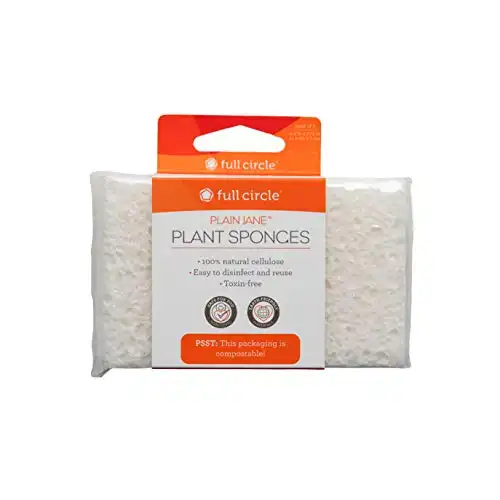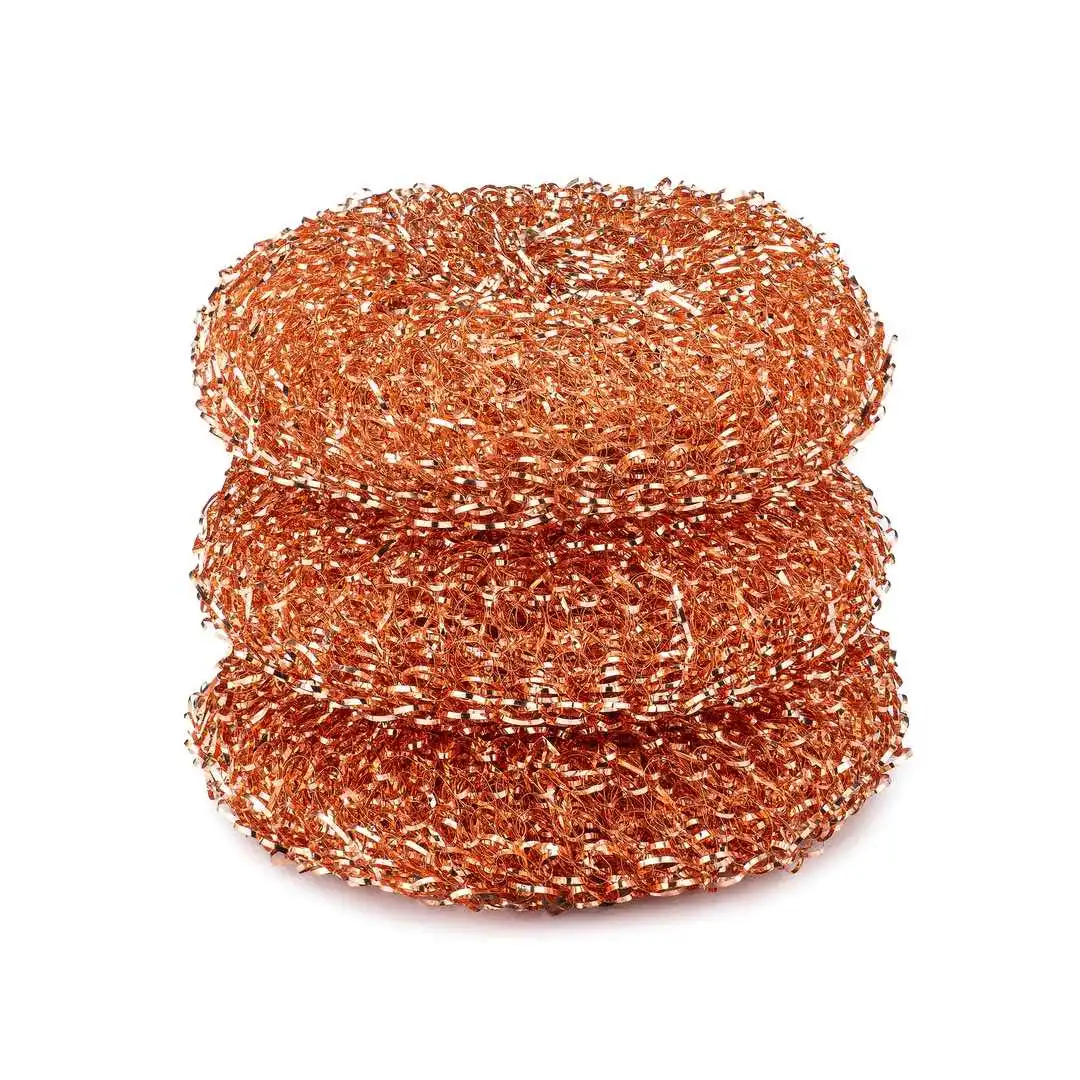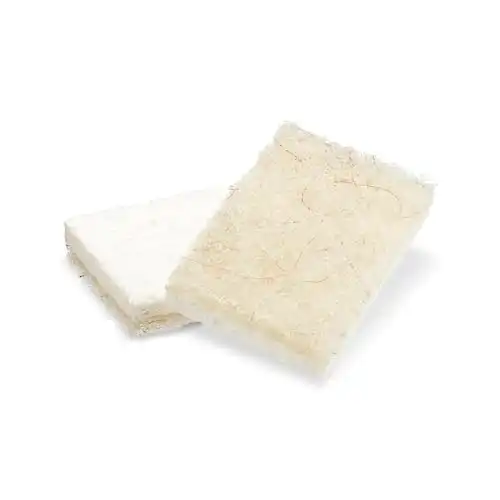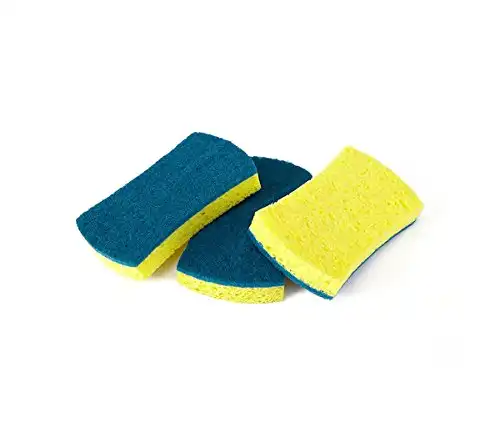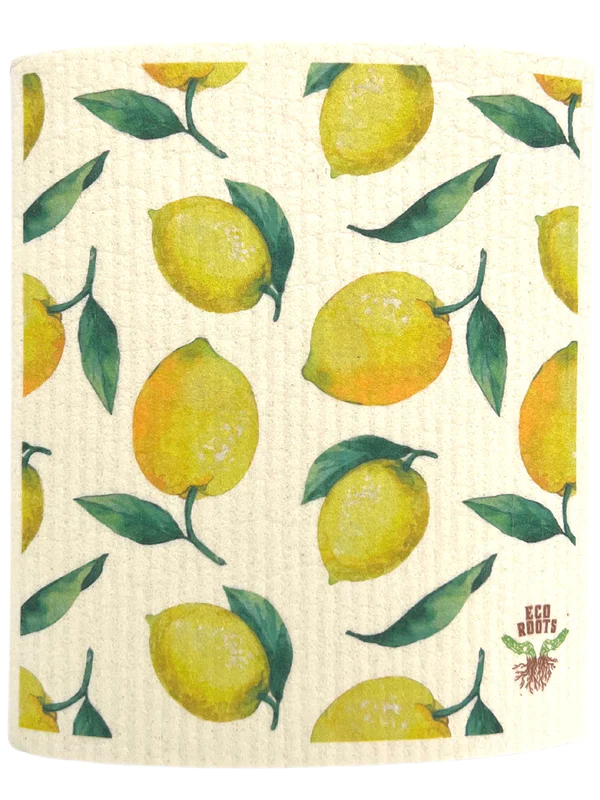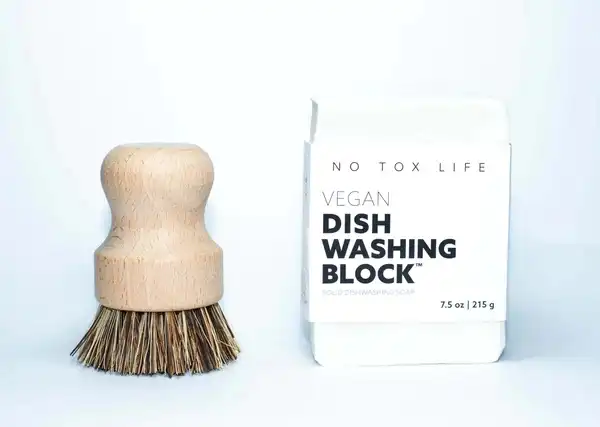While sponges are not single-use items, they do not last long either and are thrown out every few weeks, if not days, contributing to our waste stream and making it an unsustainable item if you want an eco-friendly kitchen and home.
This sustainable buying guide will explore sustainable sponge swaps, the environmental impact, and materials to look for when sponge shopping.
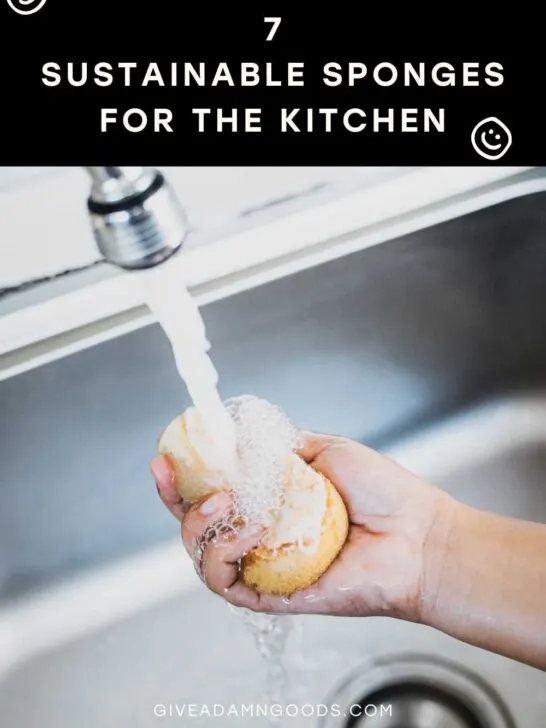
This post does contain some affiliate links. Give a Damn Goods may receive a commission if you decide to make a purchase. Our commission is at no additional expense to you. We only recommend products and brands we truly believe in.
Quick List of Best Sustainable Sponge Swaps
If you’re just looking for a quick list of low waste swaps for sponges, here you go! If you hope to learn more in depth about why we love these brands, my personal favorite sponges, materials to avoid, and sustainable materials to look for, read on!
| Product Image | Product Name / Price | Primary Button |
|---|---|---|
|
||
What‘s Wrong with Regular Sponges?
Regular sponges house lots of bacteria, which is one of the reasons we throw them away so often. The other is that they never last long anyway, falling apart after several washes. These sponges are usually made from plastics such as polyethylene, polyurethane, nylon, and polyvinyl chloride (PVC), and these types of plastic are not compostable or biodegradable.
In addition to adding to waste that just ends up in landfills, plastic kitchen sponges contribute to microplastic pollution when tiny particles of plastic from disintegrating sponges wash down the drain and enter waterways. Plastic is not only a problem at the end of a sponge’s lifespan.
The production of plastic to make synthetic products like traditional sponges is tied to negative environmental impacts because it is a petroleum-derived product.
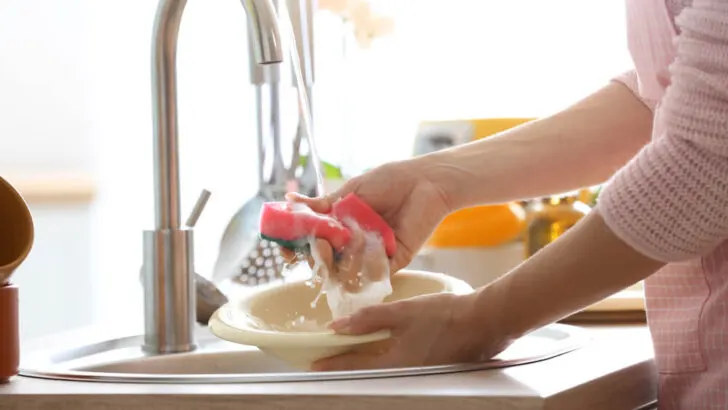
Extracting petroleum from the Earth requires clearing land for mining, which disrupts ecosystems, as well as indigenous communities. It requires massive amounts of water and energy, the latter of which contributes to the release of greenhouse gas emissions into the atmosphere. And all this before the plastic, or the final product, is even made.
You can make your disposable sponges last a little longer by disinfecting it: either soak in vinegar or boiling water or pop into the microwave or dishwasher. However, these are not long-term solutions and will certainly not make your sponge last forever.
A regularly sanitized sponge will contain the same amount of bacteria as an unclean one and may even allow some bacteria to proliferate, so you will have no choice but to throw it out.
Avoid sponges that are marked as antibacterial as these may contain triclosan. This is an antibacterial ingredient that was added to soap, but whose use has now been banned in that very product.
Triclosan has been linked to endocrine disruption, irregular embryonic development, and immune dysfunction. It can also enter the environment, contributing to the growth of harmful microalgae, which can impact aquatic life and contaminate drinking water.
What Eco-Friendly Materials Should Consumers Look for in Sponges?
There are several eco-friendly alternatives to plastic sponges that are better options. These are mostly made from natural materials, usually plant-based, that can have a lower environmental footprint during sourcing and manufacturing. Since they’re already part of the environment, not only are they renewable, but there’s also no need to clear land to grow them.
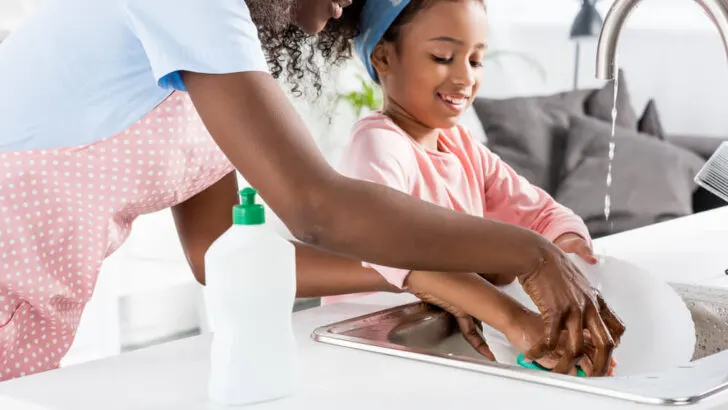
However, be mindful that this may not always be the case, such as with bamboo and wood pulp. Whatever alternative materials you choose, check whether they’ve been sustainably sourced.
At the end of a sponge’s lifespan, a natural alternative can also be more eco-friendly, because many will be compostable or biodegradable as they are made from organic materials. Here are a few eco-friendly sponges to look out for.
- Cellulose sponges. A plant-based sponge option, this material is derived from wood or vegetable fibers. It is renewable, biodegradable, and vegan.
- Loofah sponges (or Luffa) . These are also plant-derived, made from the fruits of vine-growing luffa plants. You can even grow natural loofah in your own backyard and make your own sponges.
- Coconut husks. These sponges made with coconut fibres usually used for a scouring sponge or as the top layer on a cellulose sponge. It is renewable and biodegradable.
- Sea sponge. Harvested from the sea, natural sea sponges is another natural alternative to plastic that is renewable and biodegradable. However, since sea sponges are considered animals, this option is not vegan.
- Recycled materials. If you’re going to choose a synthetic sponge, opt for ones made from recycled plastic.
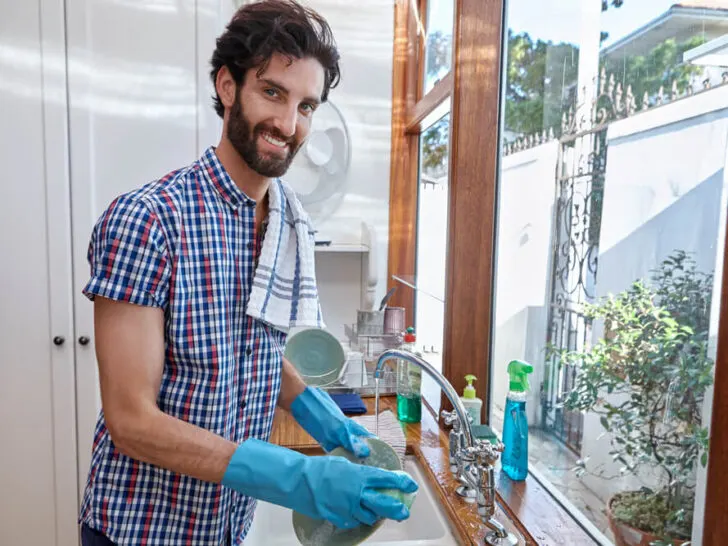
Keep in mind that some natural materials may still be mixed with plastic, which means the sponge will no longer be biodegradable or compostable. If you want to ditch traditional kitchen sponges completely, you can try these alternatives for natural sponges for more sustainable living.
- Silicone scrubbers. Made from silica, a naturally-occurring mineral, silicone is not biodegradable or easily recyclable but it is durable and long-lasting. However, these reusable sponges can become slippery when wet, making dishwashing something of a challenge.
- Steel wool. These scrubbers are great for removing grease or baked-on messes, but be mindful of scratching surfaces. They are also prone to rust. Rather try a copper scrubber, which is less abrasive, less prone to rust, and recyclable.
- Scrub brushes. They’re also made from synthetic materials but last a long time and harbor fewer bacteria. You can look for options with handles made from wood or bamboo.
- Dishcloth. You can buy one made from natural, fabric like organic cotton or get even eco-friendlier by simply cutting up old T-shirts and towels and using those instead. Just toss them in the washing machine after using and then use again! You’ll be diverting waste and reducing the need to buy something new and having a better environmental impact.
7 Eco-Friendly Sponge Options
If you’re ready to make the swap to a more sustainable sponge, read on for some recommendations and learn which sponges and scrubbers I keep in my kitchen! I personally made the swaps to zero waste scrubbers about two years ago and it’s been a great switch for me!
Using safe and sustainable materials, Full Circle aims to help you keep your home clean and green with their eco-friendly cleaning products.
These are the sustainable sponges I personally use in my kitchen!
Also available in a pack of three, the Plain Jane dish sponges are made from all-natural cellulose. It is free from triclosan and 100% compostable, as is the packaging.
The Plain Jane dish sponges are the sponges we use in our kitchen. They’re gentle on our non-stick pans and perfect for cleaning our Caraway cookware.
Biodegradable sponges are a great alternative to synthetic sponges, because while you will still need to replace them, they do can break down in your compost!
This sustainable sponge is made of natural vegetable cellulose.
Public Goods offers a range of different products for your house and home, focusing on clean ingredients and minimal packaging. This includes plenty of sustainable kitchen items such as their walnut scrubber sponge.
It is not only hypoallergenic and sustainably sourced, but also free from triclosan. The top layer is a walnut-based abrasive while the soft, bottom layer is made from vegetable cellulose.
If you’re looking for an abrasive scrubber, try the coconut sponge. This Earth friendly dish sponge is made from a mix of cellulose, recycled plastic, and coconut husk and is available in a pack of two.
This sponge is made of coconut husk and recycled plastic
It has a scrubby side for tougher grime and a soft side for delicate surfaces.
We keep these in our kitchen for the tougher grime! They work really well!
The Lucky Scrubber comes in a pack of three. Made from 100% copper mesh, it is plastic-free, long-lasting, and recyclable.
Antimicrobial copper resists mold, rust, and splinters
It is antimicrobial and the copper allows the scrubber to resist mold, rust, and splinters. It’s tough on grime but, since it’s gentler than steel wool, less likely to scratch surfaces, dishes, or your hands.
The recycled scrubber is available in a pack of three and is also good for scouring.
These eco-conscious sponges are made from cellulose, abrasive from recycled water bottles.
The top layer is made from recycled plastic (sourced from old water bottles to reduce plastic waste) and a cellulose sponge. It is free from triclosan.
EcoRoots provides eco-friendly, low waste products for your kitchen and bathroom. Their zero waste dish scrubber doesn’t look like your usual sponge or brush. It has a beechwood handle and the stiff but flexible bristles are made from union fiber (derived from hard Mexican plant fiber).
This dish scrubber has a natural beechwood handle and the bristles are made of union fibers.
It is completely plastic-free (there is also zero packaging to further cut back on waste in general and plastic in particular) and can be composted. It is vegan and suitable for kitchens and bathrooms.
We also use this on some of our more stubborn dishes. These bristles are a bit tougher and good for getting things off when food is stuck to the side of a pan or plates.
If you don’t want to use a scrubber or brush, there’s this reusable dishcloth, also from EcoRoots. Sometimes called swedish dishcloths, these are made from biodegradable cellulose and cotton, it’s great for washing dishes, wiping spills, scrubbing counters, and cleaning mirrors. I
Made of biodegradable cellulose and cotton, our reusable dishcloths eliminate single-use consumption from your kitchen.
It is non-scratch and can be used on glass, granite, tile, ceramic, and stainless steel. It air dries quickly and breeds fewer bacteria than a sponge. The cloth is available in a variety of prints that are screen-printed with water-based ink. It is biodegradable and compostable.
We do keep reusable dish cloths in our kitchen. We mainly use these for wiping down countertops and cleaning up in our kitchen after preparing a meal. I personally love that you can throw these in the dishwasher for easy cleaning and reusing. They do typically come out a bit wet and need to air dry.
Hopefully this guide has given you some sustainable swap ideas for your sponges!

